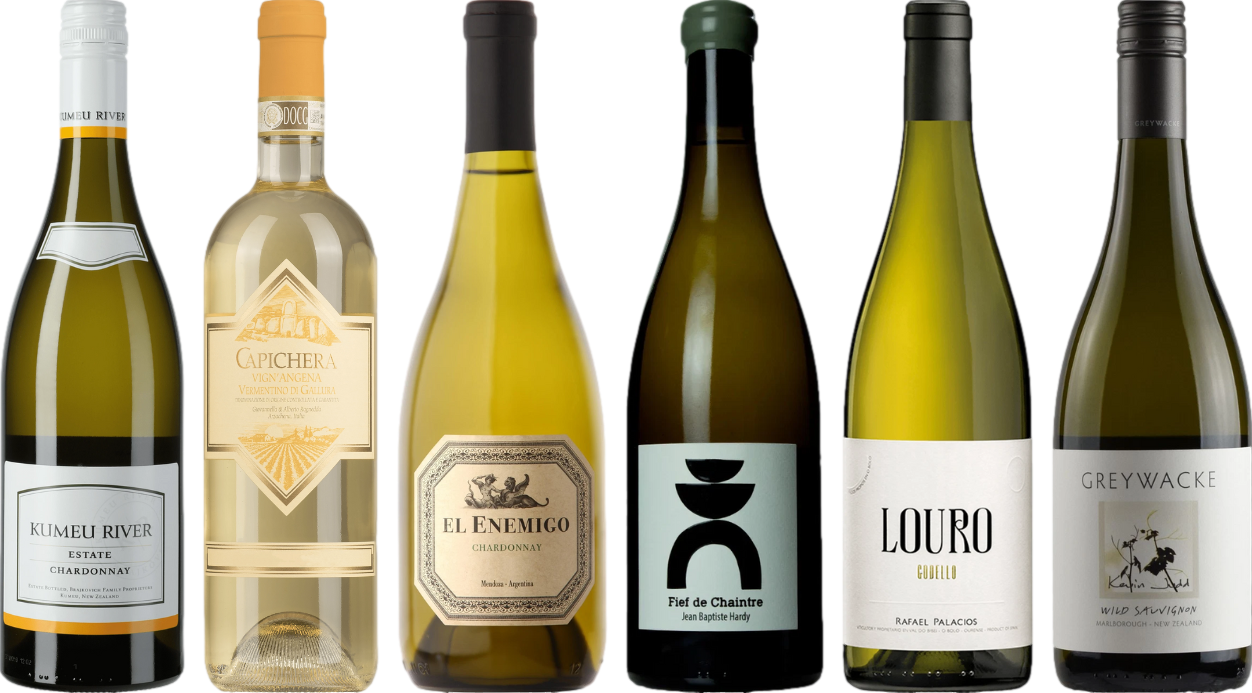



When enhancing your dishes, I highly recommend opting for dry sherry or Marsala. Both add depth and complexity, making them ideal for sauces and braises. Sherry, with its nutty undertones, can elevate your seafood or chicken preparations, while Marsala brings a rich sweetness that pairs wonderfully with mushrooms and veal.
For those who prefer a white option, consider Sauvignon Blanc or Pinot Grigio. These varietals provide a crisp acidity that can brighten your meals. Sauvignon Blanc works exceptionally well with lighter fare, such as fish or chicken, while Pinot Grigio complements creamy dishes beautifully.
If you’re leaning toward red, a dry red like Cabernet Sauvignon or Merlot can add an elegant touch to hearty recipes. Their bold flavors enhance red meat dishes and tomato-based sauces. Select a bottle that you would enjoy sipping on its own to ensure quality in your cooking.
Remember to avoid sweet wines, as they can overpower your dishes and leave an undesirable taste. Choosing the right option not only enhances flavors but also reflects your culinary skills. Happy cooking!
Choosing the Right Beverage for Cooking
Opt for a dry white option like Sauvignon Blanc or a light red such as Pinot Noir. These selections enhance flavors without overpowering dishes. For richer meals, consider a full-bodied red like Cabernet Sauvignon. Avoid anything labeled as “cooking” or “baking” which often lacks quality.
When making sauces, a quality dry vermouth can add complexity, while sherry works wonders in soups and stews. Always choose something you would enjoy sipping; the better the flavor, the better the outcome in your dish.
For those who appreciate deep, savory tastes, a splash of Chianti can elevate your pasta sauce. Experiment with fortified wines like Marsala for a unique twist in creamy dishes. Always remember to taste your selection before incorporating it into your culinary creations.
For cleaning your kitchen tools, a commercial grade pressure washer can be incredibly effective, ensuring your workspace is as clean as your ingredients.
Finally, don’t shy away from trying regional varieties that match the cuisine you’re preparing. Each choice can bring a distinct character to your dish, allowing for a delightful culinary experience.
Understanding Different Types of Cooking Wines
For enhancing flavors in your dishes, the choice of fortified liquids is crucial. Here’s a quick guide to the most common varieties you might consider:
Sherry
- Ideal for sauces and marinades due to its nutty flavor profile.
- Opt for dry versions like Fino or Manzanilla for savory dishes.
- Avoid sweet styles unless a specific dessert recipe calls for them.
Red and White Varietals
- Choose a dry red, such as Cabernet Sauvignon or Merlot, for hearty meats.
- For poultry and seafood, a dry white like Sauvignon Blanc or Pinot Grigio works best.
- Ensure the varietal is drinkable on its own; quality matters.
Rice Wine
- Used predominantly in Asian cuisine, it adds depth to stir-fries and marinades.
- Look for varieties like Shaoxing for authenticity.
Marsala
- Rich and sweet, perfect for creating flavorful sauces, especially with chicken or veal.
- Opt for dry Marsala for savory applications.
Cooking with Alternatives
- If you prefer non-alcoholic options, consider using broth or vinegar as substitutes.
- Ensure to balance flavors with herbs and spices to maintain complexity.
Experimenting with these options can lead to delightful culinary discoveries. Each type offers unique characteristics that can elevate your dishes significantly.
Choosing Wine Based on Cuisine Type
For Italian dishes, opt for Chianti or a dry white like Pinot Grigio. These choices enhance tomato-based sauces and complement rich flavors beautifully.
When preparing French cuisine, consider using a Burgundy or Sauvignon Blanc. These varieties pair well with creamy sauces and hearty meats.
For Asian-inspired meals, a dry Riesling or a light Pinot Noir works wonders. These wines balance the spices and elevate dishes with their fruity notes.
In the case of Mexican fare, go for a Sauvignon Blanc or a light-bodied red like Grenache. They accentuate fresh ingredients and vibrant flavors.
Specific Recommendations
- Italian: Chianti, Pinot Grigio
- French: Burgundy, Sauvignon Blanc
- Asian: Dry Riesling, Pinot Noir
- Mexican: Sauvignon Blanc, Grenache
Pairing Tips
- Match the weight of the dish with the wine. Lighter meals pair with lighter wines.
- Consider the dominant flavors. Choose a wine that complements or contrasts those flavors effectively.
- Don’t shy away from experimenting. Personal preference plays a significant role in finding the perfect match.
How to Pair Wine with Specific Dishes
For seafood dishes, opt for a crisp white like Sauvignon Blanc or Pinot Grigio. They enhance the freshness of the ingredients without overpowering the delicate flavors.
When serving poultry, especially roasted or grilled chicken, a Chardonnay or a light-bodied red like Pinot Noir works wonderfully. These choices complement the meat and add depth without overwhelming the palate.
Rich, hearty red sauces pair excellently with a medium to full-bodied red, such as Chianti or Cabernet Sauvignon. Their tannins balance the acidity and richness of the sauce beautifully.
For vegetarian fare, consider a versatile Grenache or a dry Riesling. These wines enhance the earthiness of vegetables while providing an interesting contrast to their flavors.
When it comes to spicy dishes, like Thai or Indian cuisine, a slightly off-dry Riesling or a fruity Zinfandel can help tame the heat and elevate the dish’s complexity.
For dessert, a sweet or fortified option such as Port or Sauternes will harmonize with the sweetness and richness of the dish, creating a satisfying end to your meal.
Lastly, always consider the preparation method. Grilled meats often pair well with smoky reds, while baked or braised dishes might benefit from a more subtle, nuanced white.
Evaluating Quality: What to Look for in Cooking Wine
Focus on the label. Choose products labeled as “cooking” or “culinary” as they are specifically crafted for food preparation. Look for wines with a higher acidity level, which enhances flavor and balances dishes. Ideally, select options with a minimum of 12% alcohol content, as this indicates a robust profile that can hold up under heat.
Examine the ingredients. Quality options should contain minimal additives. Avoid wines with excessive sulfites or artificial flavors, as these can alter the taste of your dishes. A short ingredient list typically signifies a more authentic product.
Consider the region of origin. Regions known for their wine production, such as Napa Valley or Bordeaux, often provide better quality options. These regions have established standards for grapes and production methods.
Check for vintage information. A recent vintage usually suggests fresher flavors, while older options may provide depth and complexity. However, ensure that the wine is still within its drinkable window.
Lastly, trust your palate. If possible, taste the product before purchasing. Quality should reflect not only in cooking but also when enjoyed on its own. A satisfying flavor profile will enhance your culinary creations.
Substitutes for Cooking Wine: When and How to Use Them
For recipes that call for a specific fermented grape beverage, there are effective alternatives that can enhance flavors without compromising the dish. Broth or stock is an excellent choice, providing depth while also keeping the dish moist. For a touch of acidity, a splash of vinegar–such as red or white wine vinegar–will mimic the brightness of fermented beverages, especially in marinades or sauces.
In situations where sweetness is desired, consider using a fruit juice like apple or grape juice, which can balance savory components in braises or glazes. For a non-alcoholic option, combining equal parts of vinegar and water can create a suitable stand-in that retains tanginess without the alcohol content.
Timing and Proportions
When substituting, it’s crucial to adjust quantities based on the intensity of the alternative. Start with half the amount and taste as you go, allowing room for adjustments. In simmering sauces, add substitutes early to let the flavors meld. For quick dishes, add them later in the cooking process to prevent overwhelming other ingredients.
Exploring Unique Options
Consider using fermented beverages like kombucha for a unique twist, especially in dishes that could benefit from a bit of tang. Additionally, herbal teas can add aromatic qualities, particularly in stews or braises. The key is to experiment and find what complements your dish best, enhancing the overall dining experience.
Storage Tips for Opened Cooking Wine
After opening a bottle, seal it tightly and store it in the refrigerator to maintain flavor and quality. This helps slow down oxidation, which can alter the taste.
Duration of Freshness
Typically, an opened bottle can last for about 1 to 2 weeks in the fridge. However, some varieties may retain their character for a longer period. Checking for off-odors or changes in color is essential before using.
Tips for Effective Storage
| Storage Method | Details |
|---|---|
| Seal Properly | Use the original cork or a wine stopper to minimize air exposure. |
| Keep Upright | Store bottles upright to reduce the surface area exposed to air. |
| Avoid Light Exposure | Keep in a dark place or use a dark bottle to protect from light damage. |
| Label and Date | Mark the bottle with the opening date to track freshness. |
For those who regularly use these liquids, consider purchasing smaller bottles to minimize waste. This ensures that each time you open a bottle, the contents are fresh and flavorful.
Common Mistakes to Avoid When Using Cooking Wine
One frequent error is selecting low-quality options that can ruin a dish. Always opt for a bottle that you would enjoy drinking; the flavors will carry through to your meal.
Another mistake is using sweet varieties in savory dishes. This can lead to an unbalanced flavor profile. Instead, choose dry selections that complement the ingredients in your recipe.
Not allowing the liquid to cook off properly is also common. Make sure to let it simmer long enough to reduce the harsh alcohol flavor, enhancing the dish instead of overpowering it.
Ignoring the impact of pairing is another pitfall. The choice of liquid should align with the specific ingredients or cuisine style to ensure harmony on the palate.
Overusing the liquid can mask the other flavors in a dish. A little goes a long way, so start with a modest amount and adjust according to taste.
Lastly, failing to consider the temperature can affect the final result. Ensure that the liquid is at the right temperature when adding it to your preparation to avoid shocking the other ingredients.










